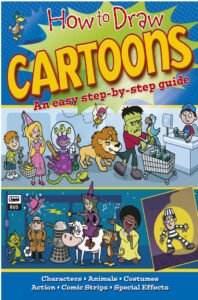NCERT Exemplar Problems Class 7 Science – Reproduction in Plants
Question 1:
Which of the following parts of a plant take part in sexual reproduction?
(i) Flower
(ii) Seed
(iii) Fruit
(iv) Branch
Choose the correct answer from below
(a) (i)’and (ii)
(b) (i), (ii) and (iii)
(c) (iii) and (iv)
(d) (ii), (iii) and (iv)
Answer:
(b) The flowers perform the function of sexual reproduction in plant. After fertilisation, the ovary grows into a fruit and seeds develop from the ovules.
Question 2:
Lila observed that a pond with clear water was covered up with a green algae within a week. By which method of reproduction did the algae spread so rapidly?
(a) Budding
(b) Sexual reproduction
(c) Fragmentation
(d) Pollination
Answer:
(c) In the presence of water and nutrients, algae grow and multiply rapidly by fragmentation. An alga breaks up into two or more fragments, each of which grow into new individuals. This process cover a large area in a short period of time.
Question 3:
Seeds of drumstick and maple are carried to long distances by wind because they possess
(a) winged seeds
(b) large and hairy seeds
(c) long and ridged fruits
(d) spiny seeds
Answer:
(a) Seeds of drumstick and maple have wings which help them to be easily carried away by wind. Various seeds and fruits have some special feature due to which they are carried away in a particular way (by wind, water or animal).
Question 4:
The ‘eye’ of the potato plant is what
(a) the root is to any plant
(b) the bud is to a flower
(c) the bud is to Bryophyllum leaf
(d) the anther is to stamen
Answer:
(c) The eye of the potato is the same as the bud is to Bryophyllum leaf. Both the structures are vegetative propagules. They can form a new plant from them. This method of asexual reproduction through the vegetative parts of the existing plant is called vegetative propagation.
Question 5:
The ovaries of different flowers may contain
(a) only one ovule
(b) many ovules
(c) one to many ovules
(d) only two ovules
Answer:
(c) Ovary is the part of female reproductive organ of the plant (i.e. pistil). It may contain one or many ovules in different flowers. The ovule in turn contains the female gamete of egg.
Question 6:
Which of the following statements is/are true for sexual reproduction in plants?
(i) Plants are obtained from seeds
(ii) Two plants are always essential
(iii) Fertilisation can occur only after pollination
(iv) Only insects are agents of pollination
Choose from the options given below
(a) (i) and (ii)
(b) only (i)
(c) (ii) and (iii)
(d) (i) and (iv)
Answer:
(a) Statements (i) and (ii) are correct.
A seed on germination grows into a new plant and fertilisation in plants can only occur after pollination (i.e. only when pollen grains have fallen on the stigma of flower).
Other statements are incorrect as a plant bearing bisexual flowers can undergo sexual reproduction itself as both male and female reproductive organs are present. Also, along with insects, wind and water are also agents of pollination.
Question 7:
Pollination refers to the
(a) transfer of pollen from anther to ovary .
(b) transfer of male gametes from anther to stigma
(c) transfer of pollen from anther to stigma
(d) transfer of pollen from anther to ovule
Answer:
(c) The transfer of pollen grains from anther of a stamen to stigma of a pistil is called pollination. It can occur by two ways as self-pollination (transfer occur in same flower or another flower of same plant) and cross-pollination (transfer occurring between flowers of two separate but similar plants. Insects, water and wind are agents of pollination.
Very Short Answer Type Questions
Question 8:
Fungus, moss and fern reproduce by a common method of asexual reproduction. Name the method.
Answer:
Fungus, moss and fern reproduce by the method of spore formation, which is a type of asexual reproduction. Spores are asexual reproductive bodies produced by the parent plant, in spore cases.
When the spore cases burst, the spores with hard protective layer are spread into air.
On return of favourable conditions, the spores germinate and produce new plants.
Question 9:
Pick the odd one out from the following on the basis of mode of reproduction and give reason for it,
Sugarcane, Potato, Rice, Rose.
Answer:
The odd one out is rice. As it reproduces by sexual reproduction. All the other three, i.e. sugarcane, potato and rose reproduce through vegetative propagation.
Question 10:
Boojho had the following parts of a rose plant-a leaf, roots, a branch, a flower, a bud and pollen grains. Which of them can be used to grow a new rose plant?
Answer:
The branch can be used to grow a new rose plant, as rose reproduces through vegetative
propagation by stem cutting method. The lower end of the stem cutting is buried in soil and the upper part having the bud is kept above the ground. The planted cutting is watered everyday.
After a few days, the cutting in soil develops roots and bud produces a shoot. In this way a branch cutting of a rose plant grows to become a new rose plant.
Question 11:
Which type of pollination does the given figure indicate?

Answer:
The given figure shows self-pollination, as the pollen grains from anther of the flower are transferred to the stigma of same flower.
Question 12:
One morning as Paheli strolled in her garden she noticed many small plants, which were not there a week ago. She wondered, where they had come from as nobody had planted them there. Explain the reason for the growth of these plants.
Answer:
The small plants which were not there in the garden a weak ago may have grown up due to the seed dispersal. The seeds from the tree may have fallen below or have been dispersed by wind or animals on the ground, which on germination developed into new small plants.
Short Answer Type Questions
Question 13:
In the figure given below, label the part marked (i), (ii) and (iii).

Answer:
The parts in the given figure can be labelled as follows:

When a pollen grain falls on the stigma of a flower, it grows into a pollen tube downwards through the style towards the egg in ovary. A male gamete moves down the pollen tube and fuses with female gamete in ovary to form a zygote.
Question 14:
When you keep food items like bread and fruits outside for a long time especially during the rainy season, you will observe a cottony growth on them.
(a) What is this growth called?
(b) How does the growth take place?
Answer:
(a) When food items like bread and fruits are kept outside for a long time especially during rainy season, a cottony growth of bread mould (a fungus) is observed.
(b) The growth of fungus takes place by spores present in air, which when comes in contact with moisture on bread germinates and grow to produce new cells.
Question 15:
Group the seeds given in figure (i) to (iii) according to their means of dispersion.
(a) Seed dispersed by wind
(b) Seed dispersed by water
(c) Seed dispersed by animal.

Answer:
Ans. The seeds and their means of dispersal are:
(a) Seed dispersed by wind The seed of maple (i) (winged seed which are light in weight) and seed of aak or madar (ii) (hairy outgrowth, which makes it lighter) can be dispersed by wind.
(b) Seed dispersed by water Seeds having spongy form and floating ability which are dispersed by water to different places.
(c) Seed dispersed by animals Seed of Xanthium (iii) are spiny with on them which gets attached to the bodies of animals and are carried to distant places.
None of the seed given in the figure is dispersed by water.
Question 16:
Coconut is a large and heavy fruit. How is it adapted for dispersal by water?
Answer:
The coconut fruits have a very developed fibrous outer coat which enables them to float in water. They are thus carried away by flowing water to distant places.
Long Answer Type Questions
Question 17:
In the figure of a flower given under, label the parts whose functions are given below and give their names.

(a) The part which contains pollen grains.
(b) The part where the female gamete is formed.
(c) The female reproductive part, where pollen grains germinate.
(d) The colourful part of flower which attracts insects.
Answer:
The various parts of a flower whose functions are mentioned above are labelled as follows:

Question 18:
Fill in the blanks with correct terms. The male and female gametes fuse to form a …(a)… during the process of …(b)… . This grows into an …(c)… which is enclosed within a seed. After fertilisation the ovules develop into …(d)… and the ovary develops into a …(e)…. .
Answer:
(a) zygote
(b) fertilisation
(c) embryo
(d) seed
(e) fruit
Question 19:
In the diagram of a bisexual flower given as figure draw the missing part and label the parts marked (a), (b) and (c). Also label the missing part that you draw.

Answer:
The missing part along with the labelled part is as follows:

Question 20:
Write how the following seeds are dispersed.
(a) Seeds with wings
(b) Small and light seeds
(c) Seeds with spines/hooks
Answer:
The mode of dispersal of the seeds with their characteristic properties are as follows:
(a) Seeds with wings, g. Seeds of drumstick and maple are light weighted and can be blown away by air. Thus, these are dispersed by wind.
(b) Small and light seeds, g. Seeds of grasses and cotton (having hairy growth) are also dispersed through wind.
(c) Seeds with spines/hooks, e.g. Seeds of Xanthium, Urena, the hooks or spines of seeds attach to the animal body. When animals move to other places and rub their body with tree, etc. These seeds fall from their body and get dispersed. Therefore, these are dispersed through animals.

